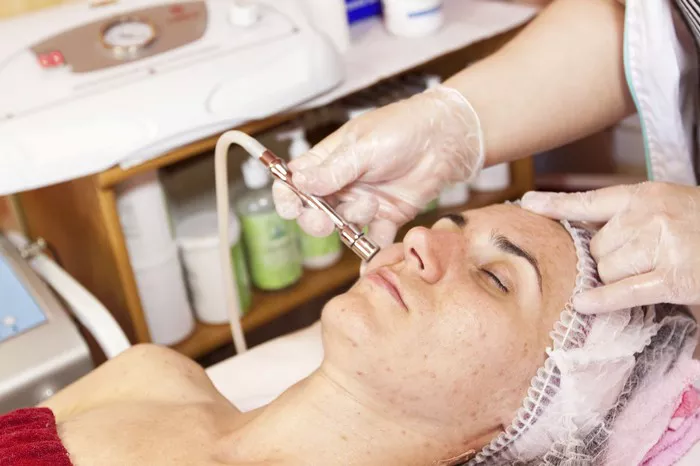Microdermabrasion is a popular cosmetic procedure that can rejuvenate the appearance of the skin by removing dead skin cells and promoting the growth of new, healthy skin. While this procedure is relatively safe and non-invasive, some patients may experience skin peeling after microdermabrasion. In this article, we will explore why this occurs and how to manage it.
What Is Microdermabrasion?
Microdermabrasion is a cosmetic procedure that uses a specialized tool to exfoliate the top layer of skin, removing dead skin cells and promoting the growth of new skin cells. This non-invasive procedure can be used to treat a variety of skin concerns, such as:
- Fine lines and wrinkles
- Age spots
- Sun damage
- Acne scars
- Dull skin tone
The procedure typically takes between 30 and 60 minutes and can be performed in a dermatologist’s office or medical spa. Most patients experience little to no downtime after the procedure and can return to normal activities immediately.
Why Does Skin Peel After Microdermabrasion?
Skin peeling after microdermabrasion is a common side effect that many patients experience. This occurs because the procedure removes the outermost layer of dead skin cells, which can cause the skin to become dry and flaky.
Additionally, microdermabrasion stimulates cell turnover, which can cause new skin cells to grow more rapidly than usual. As these new cells push their way to the surface, they may cause the old, dead skin cells to shed.
How to Manage Skin Peeling After Microdermabrasion
While skin peeling after microdermabrasion is a common occurrence, there are several steps you can take to manage this side effect and promote healing.
-
Keep the Skin Hydrated
One of the most effective ways to manage skin peeling after microdermabrasion is to keep the skin well-hydrated. This can be achieved by using a gentle, fragrance-free moisturizer that is free from harsh chemicals or exfoliants.
It’s important to avoid using products that contain retinol or alpha-hydroxy acids (AHAs) immediately after microdermabrasion, as these can further irritate the skin and contribute to peeling.
-
Avoid Sun Exposure
After microdermabrasion, it’s important to avoid direct sun exposure for at least 24 hours. The skin will be more sensitive than usual and may be more prone to sunburn or sun damage.
If you do need to go outside, be sure to wear a broad-spectrum sunscreen with an SPF of 30 or higher. Additionally, consider wearing a wide-brimmed hat and protective clothing to shield the skin from the sun’s harmful rays.
-
Don’t Pick at Peeling Skin
While it may be tempting to peel away flaky skin, doing so can cause further irritation or even infection. Instead, let the skin naturally shed on its own and resist the urge to pick or scratch at peeling skin.
To help speed up the shedding process, consider using a warm compress or taking a warm bath. This can help soften the skin and encourage dead cells to loosen and fall away.
-
Follow Your Dermatologist’s Instructions
Finally, it’s important to follow your dermatologist’s post-procedure instructions carefully. Your provider may recommend avoiding certain skincare products or activities for a period of time after the procedure to ensure optimal healing.
Additionally, they may recommend scheduling a follow-up appointment to assess the results of the procedure and determine whether any additional treatments are necessary.
Conclusion
Skin peeling after microdermabrasion is a common occurrence that can be managed with proper care and attention. By keeping the skin well-hydrated, avoiding sun exposure, resisting the urge to pick at peeling skin, and following your provider’s post-procedure instructions, you can ensure that your skin looks its best after microdermabrasion.
If you are considering microdermabrasion, be sure to consult with a qualified dermatologist or skincare professional to determine whether this procedure is right for you and how to best care for your skin afterwards. With the right approach, you can enjoy smoother, brighter, more youthful-looking skin in no time.


